Liholiho Yacht Club Offers Up A Delectable Voyage
At Liholiho Yacht Club, Chef Ravi Kapur wants you to know first and foremost that he’s not cooking Hawaiian food.
But that doesn’t mean you won’t daydream about the islands when you sit down to dine at his San Francisco restaurant.
“The people who visit Hawaii say this isn’t like Hawaiian food at all,” Kapur told me in an interview earlier this year. “But the people from Hawaii say this reminds them of what they ate in Hawaii. It’s all about the flavors.”
Indeed, it is. It’s all about a pantry heavy on Asian ingredients that allow him to think of making duck liver mousse with Shaoxing wine, rather than the usual Calvados. It’s about a mire poix that’s not based on carrots and celery, but on scallions and ginger.
Kapur’s cooking is a blend of his Indian and Chinese ancestries, his time growing up in Hawaii, and his fondness for the Bay Area’s impeccable ingredients.
The restaurant’s name is taken from the street where Kapur’s uncle lived on Maui, where he’d host blow-out barbecues to help support his catamaran racing habit.
“The idea refers to the past, but also to the idea of the ocean and migratory nature of what Hawaii is,” Kapur says. “It’s my journey and voyage to this restaurant.”
And it seems, everyone wants to come along for the ride, as evidenced by the crowds every night at the casual, brick-lined dining room.
My husband and I (we paid our own tab at the end of the night) arrived early on a recent Saturday evening without reservations only to find the restaurant already full. We were lucky to snag two spots at the end of the bar — not seats, mind you, but standing room only. It wasn’t necessarily uncomfortable standing while eating, and it afforded a great view of the kitchen. Plus, by the time we were ready for dessert, the couple next to us had left, so we shifted over to take their seats at the bar.
You can’t go wrong starting with a cocktail, such as the Clifton Special ($11), a breezy, light blend of Diep 9 Genever, coconut water, coconut syrup and soda water.
Sharing dishes is encouraged, especially because portions are quite generous in size.
I’m a sucker for steamed buns, and the ones here with beef tongue ($12.50) offer a respite from all those pork belly ones on so many other menus. The tongue is super tender and accented with kimchi, pickled cucumber, and a creamy mayo-like sauce. It’s all nestled into clam-shell bun strewn with poppy seeds for added crunch and visual appeal. It’s messy to eat, with things dripping out here and there after you take the first bite. But it’s well worth the extra napkins.
Tuna belly misoyaki ($14.75) offers up the rich fish marinated in miso, giving it a rich umami taste. It’s dressed with the same sweet-tangy sauce you dip tempura into. A shower of julienned radish and Fuji apple garnishes the top of it all to provide a fresh, crunchy component.
Twice-cooked pork belly ($29.50) is first simmered in stock with Shaoxing wine, lemon grass, ginger, star anise, cinnamon and garlic before being roasted in the oven, then glazed with a sweet soy-ginger-chili sauce. The pork belly arrives in slabs with a blubbery, juicy layer of fat. Don’t even think of cutting that part off and pushing it to the side. It’s an indulgence that can’t be denied. Yes, this is a very rich dish. But chunks of pineapple and bursts of fennel and basil add relief, along with a complimentary bowl of plain steamed rice on the side.
Fried cornish game hen brings the entire hen, cut up, and fried until golden and crisp. It’s strewn with fried, crisp kale leaves and crunchy whole cashews. It’s like Asian fried chicken, though, with a better ratio of the longed-for skin to meat.
I think everyone around me must have ordered the same dessert, as I kept seeing it going out to nearly every diner. The appeal of the baked Hawaii ($10) is understandable, though. It’s become an Instagram sensation because it is gorgeous looking. It’s a fun take on a very old-school dessert. And it just tastes heavenly, with its torched marshmallow-y exterior enveloping a mound of pineapple ice cream perched on a thin layer of spongecake atop a butter cookie. Caramelized pineapple and toasty clusters of coconut complete this dazzling dessert.
As anyone who has read my blog knows, I’ve become obsessed lately with butter mochi. So, after one dessert, I ordered another to-go — Liholioho’s coconut butter mochi ($10). A large square was nestled in the cardboard box, which I took home to enjoy for breakfast the next day. (Hey, don’t judge.) The butter mochi was chewy-sticky as hoped. What made it really interesting, though, was the thin layer of coconut milk custard baked over the top. I’d never had a version of butter mochi like that before. It made me want to try recreating it at home some day.
Kapur may not call his dishes Hawaiian per se. But no matter the semantics, you’re sure to find them addictive. I know I sure did.
More: For the Recipe for Ravi Kapur’s Twice-Cooked Pork Belly, check out my story in the July issue of Plate magazine.
Another Restaurant to Check Out in the Same Vicinity: All Spice San Francisco

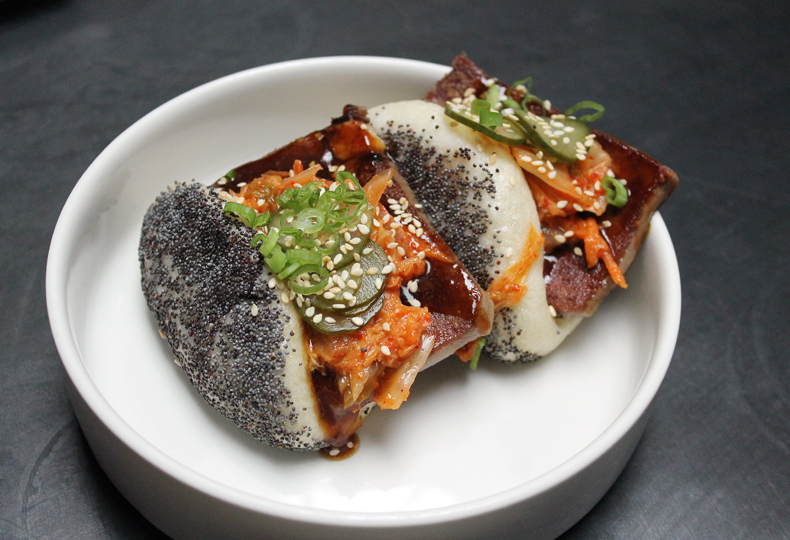
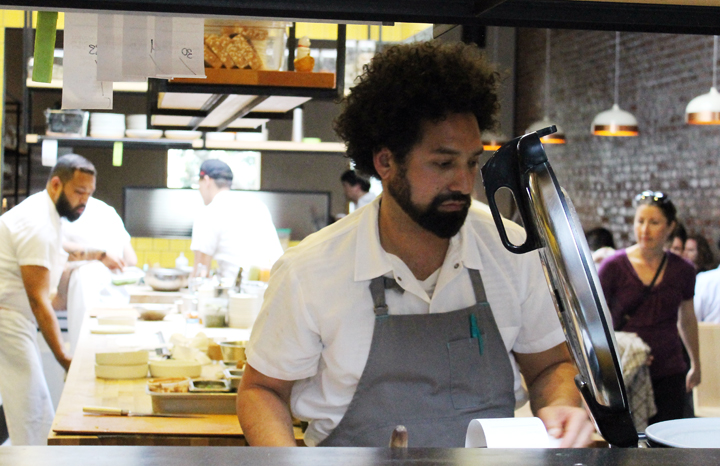
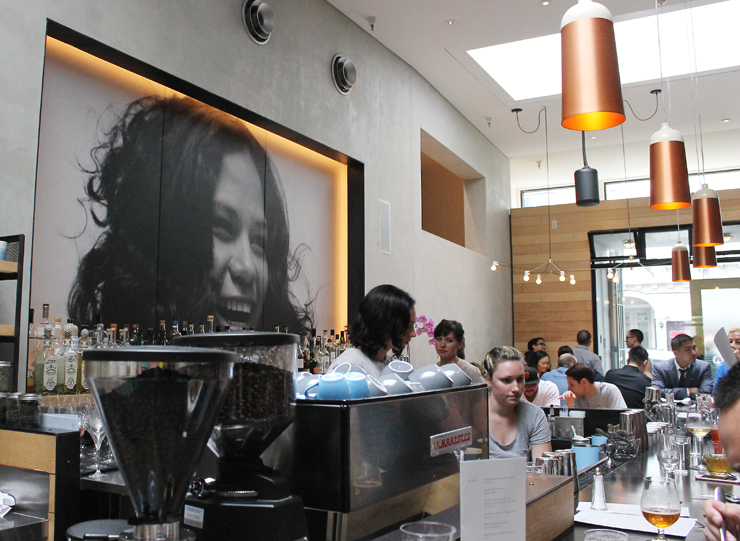
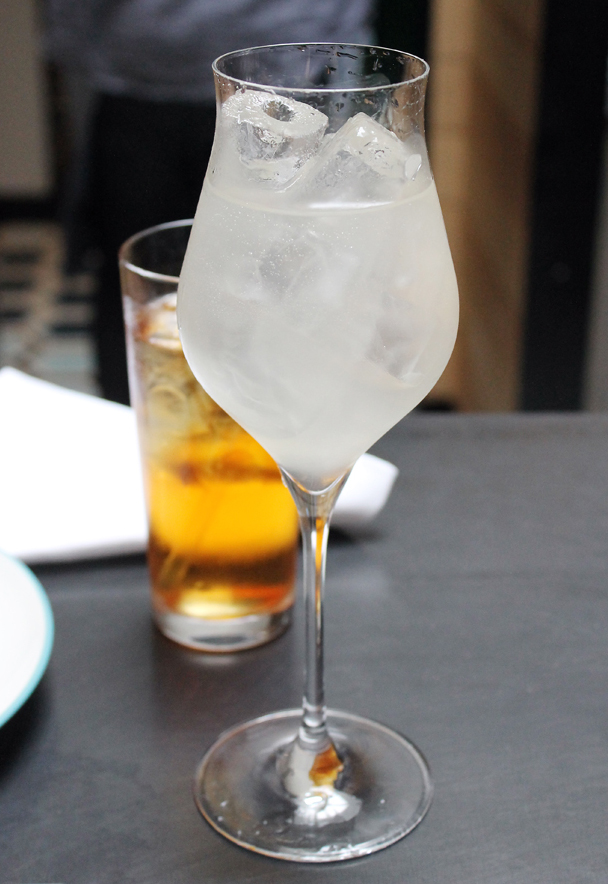
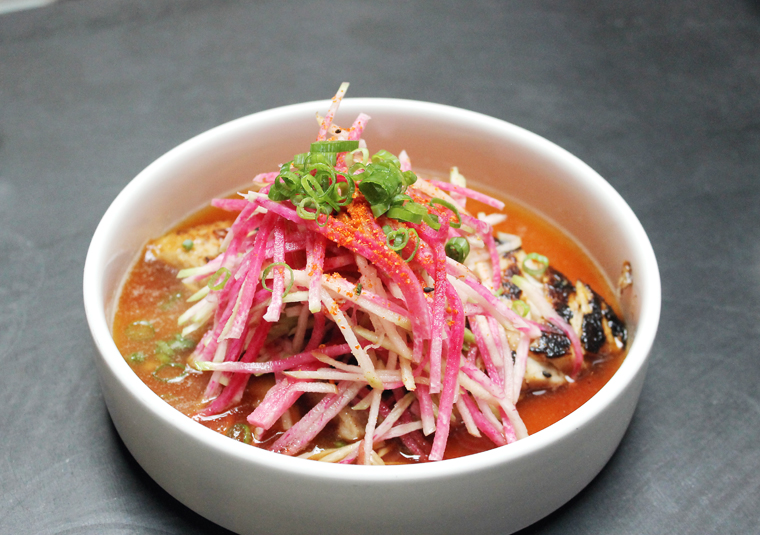
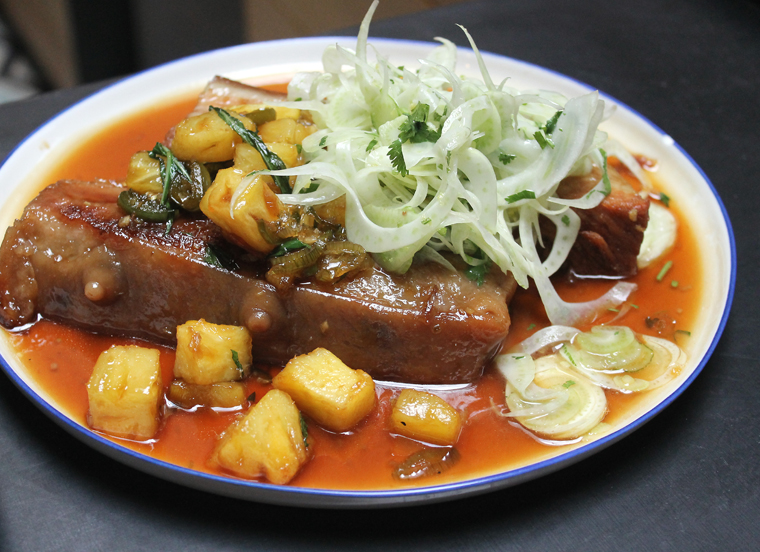
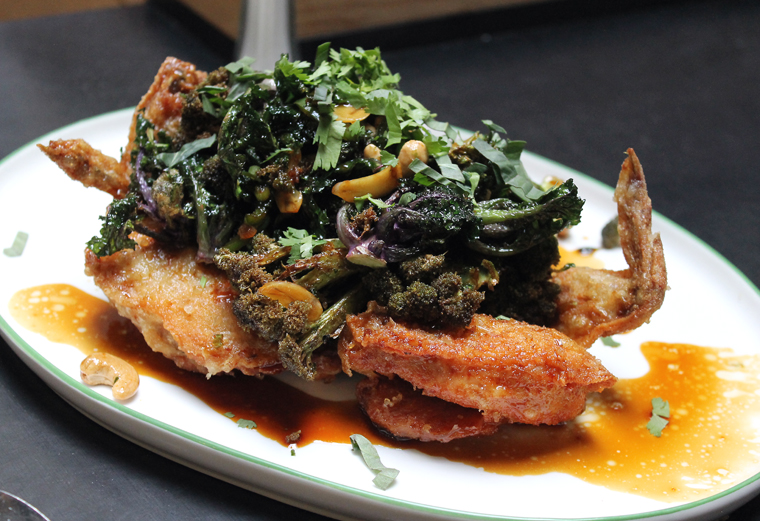
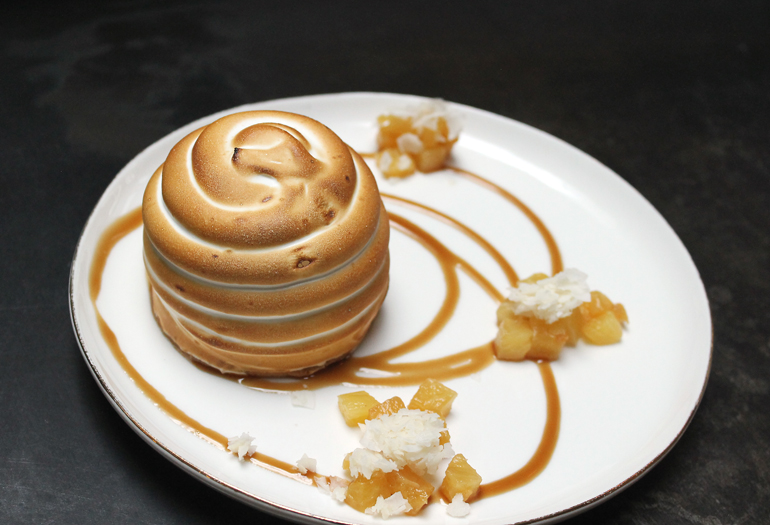

I love eating at bars and peering into the kitchen! Very entertaining. And this food looks wonderful! My kind of place — thanks.
And this food looks wonderful! My kind of place — thanks.
I ate there for my birthday and the poppy seed buns were my favorite! We also ordered the secret menu item, their homemade Spam.. It was delicious and will make you never eat Spam the same.
I’ve heard so much about the famous buns. Everything looks amazing….and coconut custard butter mochi??
Looks exciting, I’m looking forward to trying this place out. I wished I could see the inside of that Baked Hawaii! And the pork belly is one of the few I’ve seen that truly is reminiscent of the popular Chinese pork belly dish called “kau yuk” that is braised pork belly in pickled vegetables.
Ben: You hit the nail on the head. Chef Ravi told me he created this pork belly dish because it’s reminiscent of kau yuk, a true comfort dish that he grew up eating.